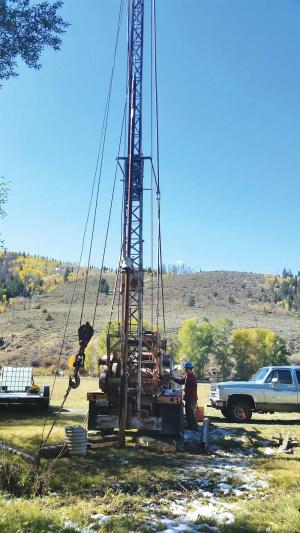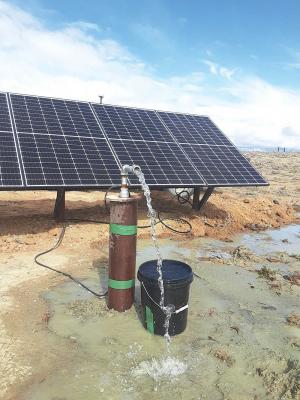2021 - Volume #45, Issue #6, Page #09
[ Sample Stories From This Issue | List of All Stories In This Issue | Print this story
| Read this issue]
He Teaches How To Do Cable Tool Well Drilling
 |
 |
“I charge from $700 to $1,200 per person for training,” says Crush. “Training is done on a real well as it’s being drilled. It can take from two to three days up to three weeks, depending on the well being drilled.”
The price varies based on the type of student, adds Crush. “Some get right in and do the work, and they pay less,” he says. “If they want to sit back and watch and ask questions, they pay more.”
The main reason he charges for the training is he has to slow down the drilling process when working with beginners. “I’m trying to make a living doing well drilling, but this is about helping people, especially younger people, learn a trade.”
Crush describes a young man and his dad from New York state who came to Wyoming to take the training. The son couldn’t go to college because of COVID.
“The dad suggested getting training in well drilling instead of taking out $250,000 in student loans,” recalls Crush. “They bought a rig in Canada and went into business.”
A big advantage to cable tool drilling is the cost of getting into business. Crush notes that a rotary drilling system requires a backhoe, water truck, gooseneck trailer, and the rotary drill. Total costs can run up to a million dollars and require multiple crew members.
“I can buy a used cable tool drilling rig for $20,000 to $60,000 and run it by myself with no overhead,” says Crush.
Crush says cable tool well drilling can be a good business. “Once word gets out that you never hit dry holes, you keep busy,” he says. “However, it is harder to do and requires more labor and time, which makes it more expensive than drilling wells with a rotary drilling rig.”
He notes that a rotary rig can drill a 500-ft. deep well in a day, while a cable tool rig will drill from 30 to 50 ft. a day.
“I’ve had folks go with the rotary drilled well and come up dry. Then they call me to drill a well that produces water,” says Crush. “It would have cost them less to have a sure thing the first time.”
Crush started out in the well drilling business with a rotary rig. It involves injecting drilling fluid, which is clay mixed with water, into the hole while drilling.
“Drilling a well is nothing more than digging a hole in the ground and inserting casing and a screen before the hole caves in,” explains Crush. “The drilling fluid keeps the hole from caving in until the casing is put in place, but it also holds back the water. We use water instead of drilling fluid, so we don’t seal the water off.”
Cable tool well drilling consists of dropping a heavy hammer/bit into the hole to smash through layers of dirt, sand, and rock to reach water. Each time the bit is lifted out, it is turned slightly and dropped again.
Periodically, a bailer (bucket with a trapdoor bottom) is dropped in to remove mud, water, and crushed rock. The amount of water removed with the bailer is key.
“If you only added 5 gal. of water, but the bailer removes 15, you know you have hit water,” says Crush. “If the hole is real straight, you can look in with a mirror and see the water coming in.”
The technique is especially well suited to formations in western states, where it is common to encounter loose rock formations like a bowl of marbles, caves, and more that are impossible for rotary well drilling.
Crush and his son Andrew buy and sell books, manuals, old parts, and old rigs. He also sells drilling additives, diesel conversion power units, drill bits, bailers and more.
“We would like to hear from people who have old drilling rigs in their yard and don’t know what to do with them,” says Crush. “We will buy them and refurbish them for missionaries and water relief groups that drill for water in Africa and South America.”
Contact: FARM SHOW Followup, Cabletoolman, Saratoga, Wyo. 82331 (ph 307-321-4729; 307-267-8923; wyopower@gmail.com; www.andrewswaterwell.com).

Click here to download page story appeared in.

Click here to read entire issue
To read the rest of this story, download this issue below or click here to register with your account number.




